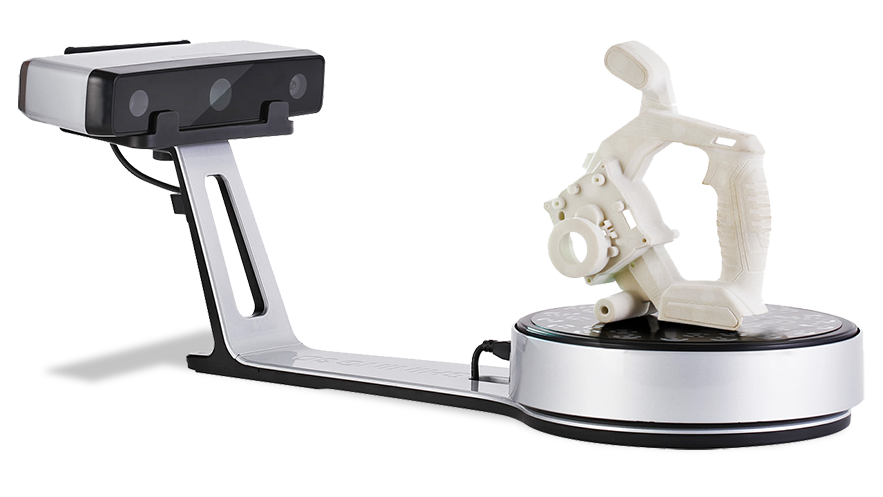We have much experience with hardware prototyping of plastic parts, metal parts and electronic parts. Electro-mechanical prototypes typically require software prototyping, which we also have much experience with.
We are confident we can deliver rapid prototyping solutions for you. The following sections outline some key phases.
Our core business is focused on projects that have a break-even point, such as resale via mass production. To learn more about this see our page on Lismore New Product Development.
Product Design Phase (Computer modeling from scratch or 3D scanning)
During this phase we assess your requirements to determine if we are best to design your model from scratch using 3D CAD tools, 3D animations tools, or perform a 3D scan an mock up model.
While 3D scanning sounds like an easy option, it is not perfect, and requires much cleaning up of the model. Further it produces a file with point cloud data, which then must be converted to a typical CAD file (e.g. .igs, .stp, and/or .stl). It is because of these reasons, it is generally quicker to create the design from scratch (unless the target requirement is just to reprint the scanned object without any additional design features - which is a service we're not keen on providing).
In terms of electronics - generally we design custom electronics to get the unit cost down, but in some cases we might use off-the-shelve electronics (e.g. Proof-of-concept prototype).

Product Prototyping Phase
Plastic mechanical parts will likely be 3D printed via various methods such as Fused Deposition Modeling (FDM), Stereolithography (SLA), Selective Laser Sintering (SLS), Multi Jet Fusion (MJF) or CNC'ed in some cases. The material options are kinda endless from rigid to rubbers, such as ABS, PLA, Polycarbonate (PC), Acrylic (PMMA), PET, PEEK, Polyamide aka Nylon (PA), Glass reinforced nylon (PA66+GF), Polyurethane (PU), Polypropylene (PP), Polyvinyl Chloride (PCV), Thermoplastic Elastomer (TPE), Thermoplastic Olefin (TPO), Thermoplastic Polyurethane (TPU), PEBA 2301, Nitrile Rubber (NBR), Polytetrafluoroethylene aka Teflon (PTFE) and more. There are also various finish options such as transparent, transulent, colours, electro-plating, reflective mirror, and screen-printing graphics.
Metal mechanical parts can be 3D printed also, however in our opinion CNC is still the better option. The material options are also kinda endless such as aluminum (AL), steel, stainless steel (SS), brass, etc. There are also various finish options such as blackening, electro-plating (Chrome-plating, Nickel-chrome plating, Zinc-plating, Galvanizing), anodized (black, matte clear), and chromating conversion.
We've also made prototypes using materials such as Carbon Fiber, Fibreglass, Glass wool, DuPont, Vectran, conductive thread, and look forward to playing with Graphene one day.
Electronic parts will involve manufacturing of bare PCBs, then assembling PCB surface-mount (SMT) and through-hole (THT) components via soldering methods such as a stencils, reflow oven, IR heat lamp, hotair rework station, soldering iron, etc.
Hardware bugs are likely, and we'd hack things to make the working prototype. During this process we'll make notes on the design changes required for the next revision.

Servicing the Lismore, New South Wales, Australia Community: COletek's Commitment to Innovation and Reliability
Let’s build something remarkable together.
Contact UsRapid 3D Prototyping for Lismore – Our Clients: Big Brands & Small Businesses


















































































































































Rapid 3D Prototyping for Lismore – Amazing Customer Testimonials
COLETEK installed a security camera system in our food processing facility that included 89 cameras both internal and external to the factory. They were professional through the quotation and installation process and have been supportive with their after sales service. Based on our experience we would have no hesitation in recommending COLETEK to anyone searching for customised surveillance camera solution.

Very reliable, professional and knowledgeable. In our office were we all amazed by Luke's knowledge of IT and how much he know about different IT issues, specially about the IP cameras. We recommend their services and we will always use their services in the future.

